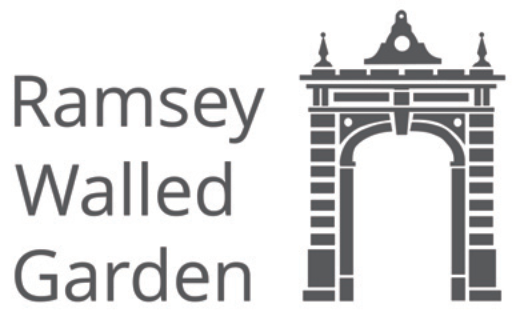Website design: Coral Design Management Website construction: Brilliant Digital
Menu
The garden is open 2 – 5pm on Sundays and Bank holiday Mondays during April to October. Free Entry & Parking

Medieval Times
The exact location of Ramsey Abbey remains a mystery, but our Walled Garden is located within the boundaries of the Abbey. Ramsey Abbey was founded in 969 and in the Middle Ages was one of the richest abbeys, known as Ramsey the Golden. There would undoubtedly have been a herb garden somewhere near the Abbey buildings. In medieval Britain, the common folk surrounding a Benedictine monastery relied heavily on the compassionate monks for advice and treatment of their illnesses. Most monasteries had a Herb Garden with a specific layout for medicinal and culinary herbs, many of which were brought back from the continent by the crusaders. The interpretation panel in our Herb Garden explains the specific properties and  historic importance of herbs and how the layout of these special gardens has featured throughout the centuries.
historic importance of herbs and how the layout of these special gardens has featured throughout the centuries.

Historical ownership
The Cromwell family acquired the estate on the dissolution of the monasteries and built a house on part of the old abbey. In 1737, the Fellowes family (later Lords De Ramsey) purchased the estate and in c 1804 commissioned Sir John Soane to enlarge the house. Later Sir Edward Blore did further work and we believe the Walled Garden was his work dating from about 1840. Throughout the Victorian and Edwardian periods, the garden produced vegetables, fruit and flowers for the house and had well stocked flower borders and a range of greenhouses covering the entire south facing wall. In the 1930s, Lord De Ramsey moved to Abbots Ripton and the estate was bought by Diana Broughton (née Fellowes). She sadly died very young and at her wish, Ramsey Grammar school moved to the house. Since that time, the garden slowly declined and by the mid 1990s was completely overgrown with self-sown trees,
brambles and weeds.

The Restoration
The garden was ‘rediscovered’, by chance, in 1996 by a member of the Cambridgeshire Gardens Trust. The Trust researched the site led by Chair, John Drake in the spring and summer of 1997. The team decided that the garden was of sufficient importance to merit a restoration programme. At this time the original box hedges were so overgrown they resembled trees. The apples in the apple tunnel were in very poor condition and an old mulberry tree needed extensive work. A new charity was formed in 2004 to undertake the restoration and subsequent management. A Heritage Lottery Grant enabled the start of two main tasks: developing a new access route from Ramsey Rural Museum and constructing a new frame for the apple tunnel. The garden was officially opened by Lord Fairhaven (the last owner’s son) in 2010. Since then, the garden has gradually developed with new flower borders, trained fruit trees and vegetable beds.

Recent Times
The Walled Garden has benefitted now and throughout the years from the dedication of volunteers donating their time and effort to maintain the garden. Recently it also received a wonderful financial gift, that allowed the Trust to purchase and install the magnificent Victorian style glasshouse, which was officially opened by Bunny Guinness in 2017. Fund raising events are held in the  garden, where jams and pickles made from our own fruit and veg are sold along with produce from the garden. Our apple tunnel has 20 varities of apple bred in Cambridgeshire. Our latest addition is a collection of over 80 salvias, the collection of Janet Buist of Pennycross plants in Colne. She was planning to retire and thought our Walled Garden with its heated greenhouse for tender varieties, would be a suitable venue for the collection she had built up over many years.
garden, where jams and pickles made from our own fruit and veg are sold along with produce from the garden. Our apple tunnel has 20 varities of apple bred in Cambridgeshire. Our latest addition is a collection of over 80 salvias, the collection of Janet Buist of Pennycross plants in Colne. She was planning to retire and thought our Walled Garden with its heated greenhouse for tender varieties, would be a suitable venue for the collection she had built up over many years.
